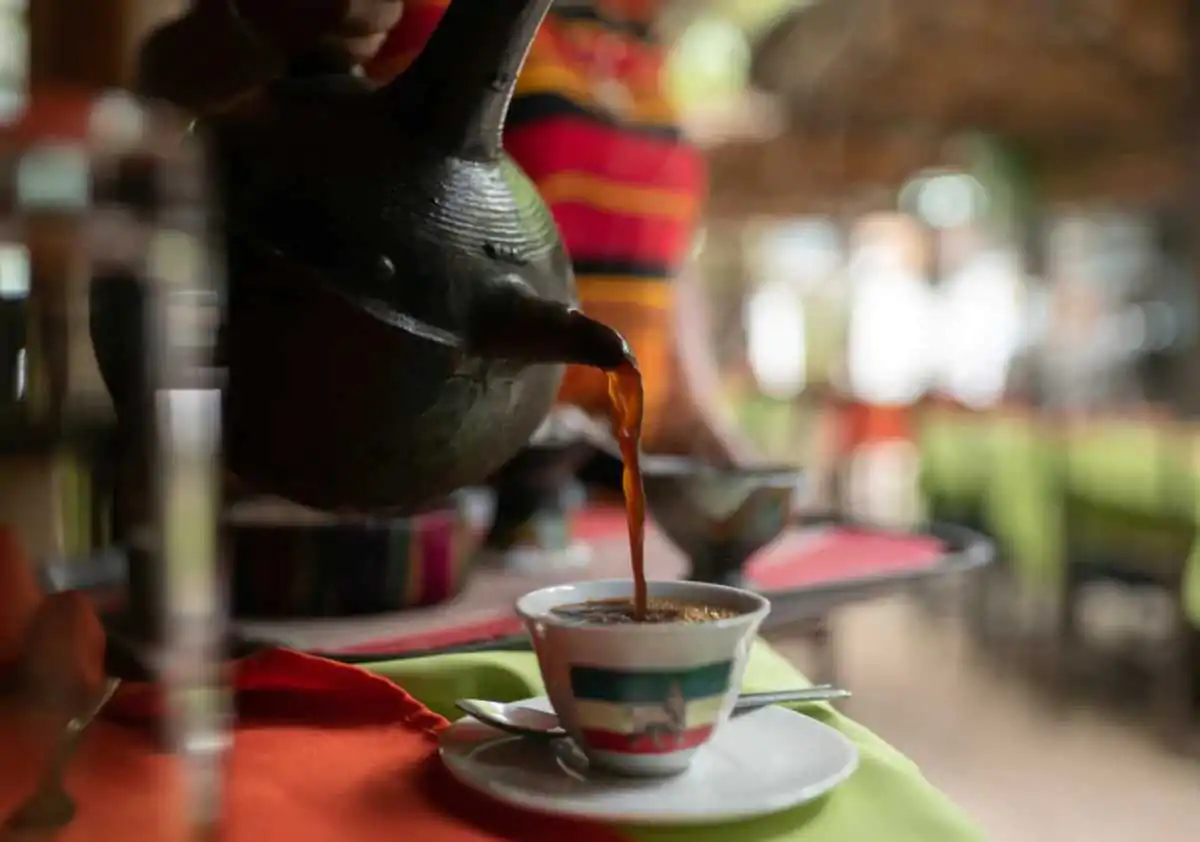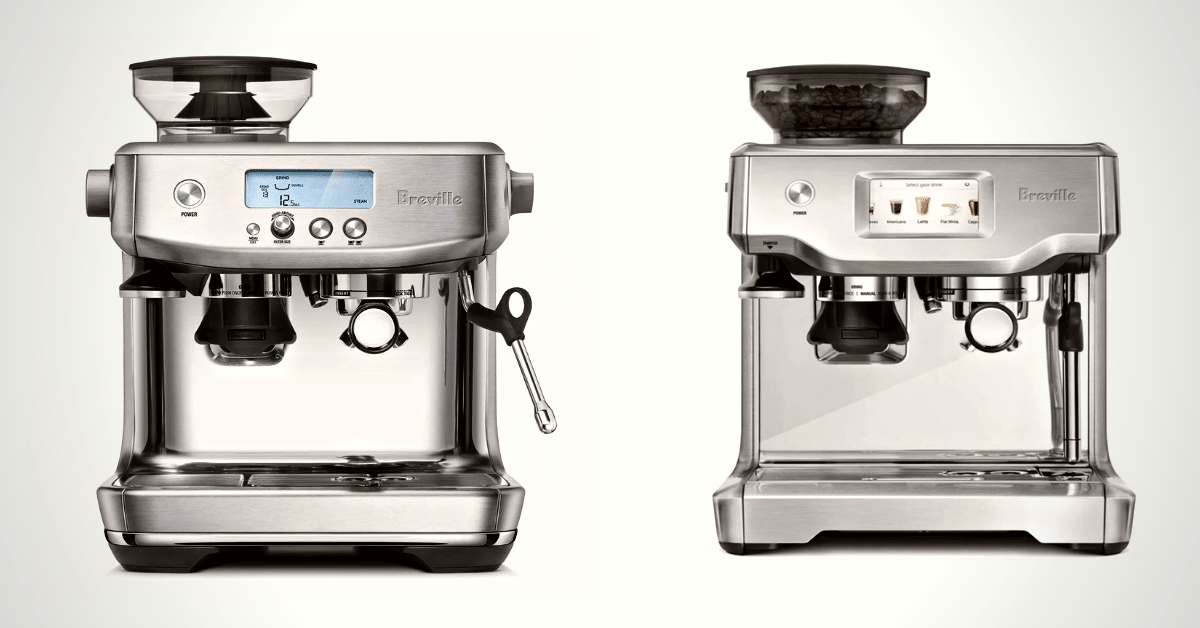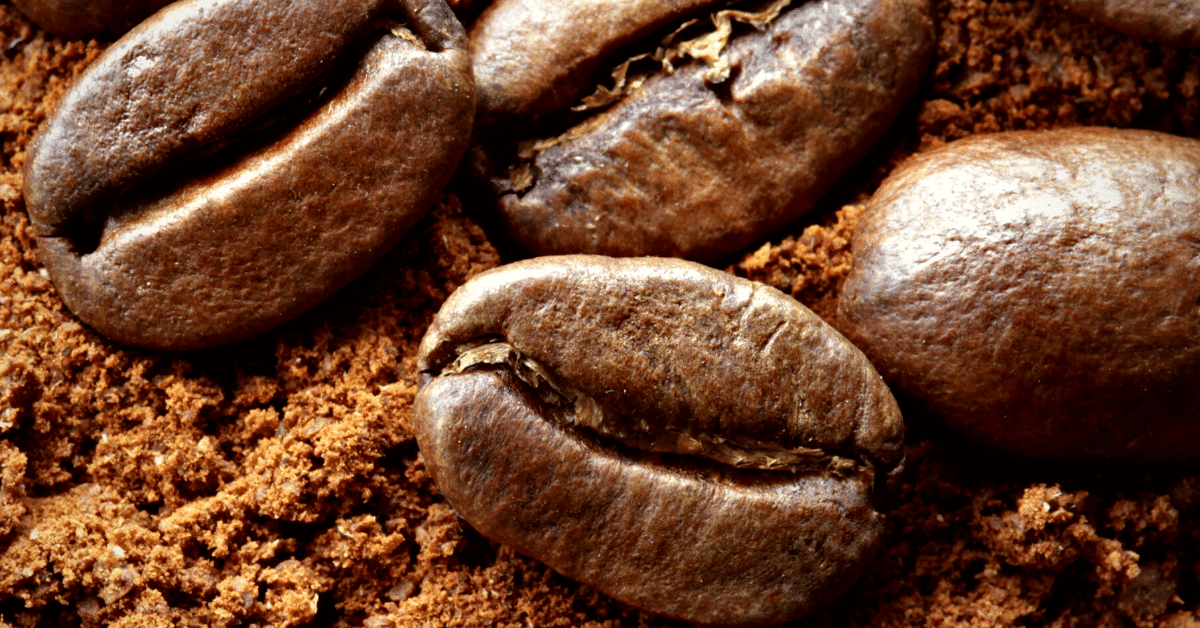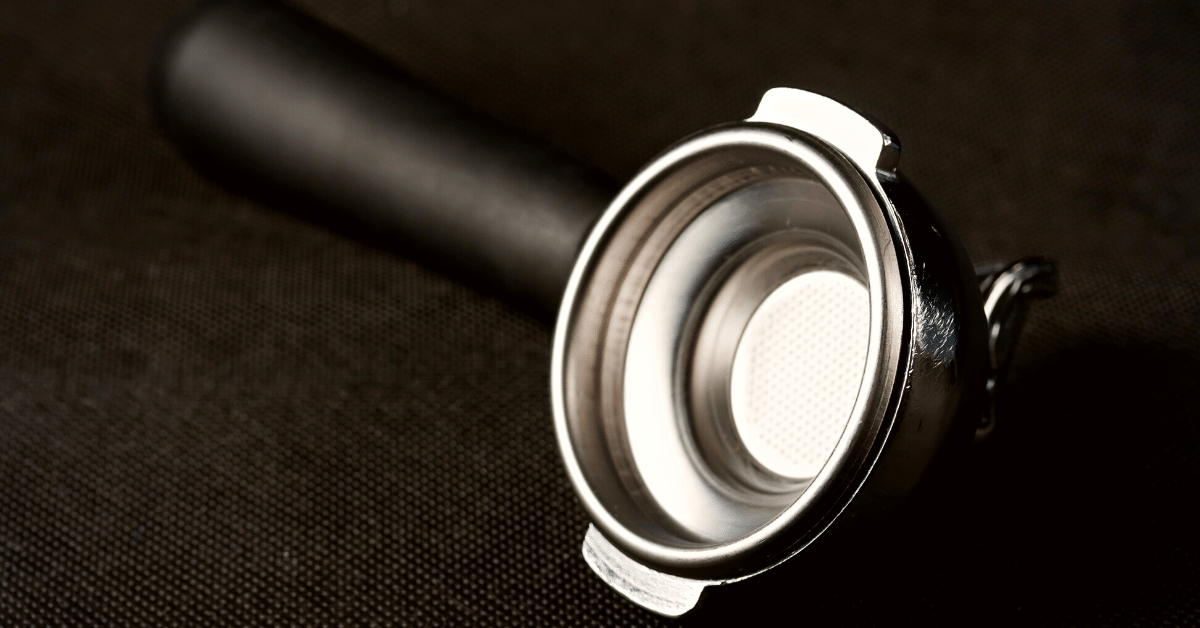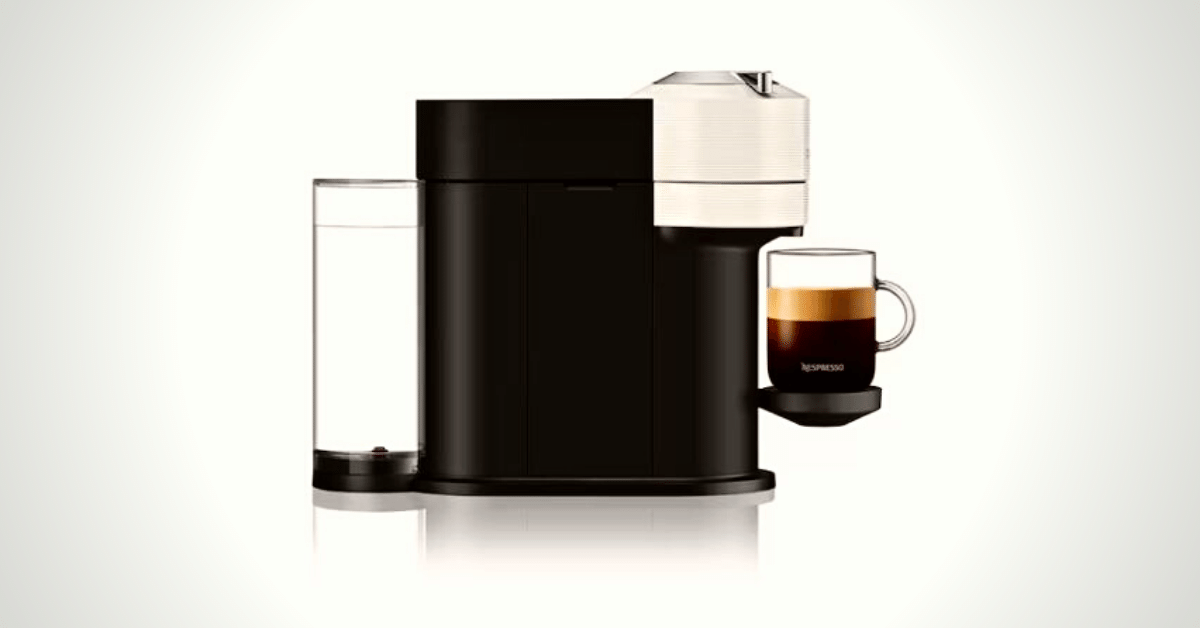What is Ethiopian coffee? Geographically, the answer is clear. But in this article, we’ll discuss everything else, from flavor to its cultural significance.
If you’re on a quest to find the world’s finest coffee, you’ve surely come across Ethiopian java. If African coffee is considered to be one of the best, then Ethiopian coffee is crème de la crème.
Many coffee connoisseurs would urge you to try it, and so would I. Ethiopia is known for producing premium single-origin beans, but there’s way more to it than just being a coffee industry.
Today, I’ll share with you everything there is to know about Ethiopian coffee, from its history and tradition to growing regions and flavor profiles. So, let’s dive straight in! You might also be wondering, what is Argentinian coffee?
The History and Cultural Significance of Ethiopian Coffee
Ethiopia has a very long history of growing coffee. In fact, it’s believed that this country is where the plant originates from. A legend has it that a goat herder, Kaldi, who lived during the 9th century, noticed his herd behaving erratically and energetically after munching on red berries from a nearby tree.
Kaldi found that strange, so he picked a few of those mysterious berries and brought them to the nearest monastery. The abbot made a drink using the berries, quickly discovering that it could keep him alert through the evening prayer. The word spread quickly, and it wasn’t long before everyone was hooked on the energizing drink. The trees on which these berries grew were, of course, coffee trees.
Today, Ethiopia is the largest coffee producer in Africa and the fifth largest in the world. Speaking in numbers, this country produces about 8 million 60-kilogram bags of coffee on a yearly basis.
The Tradition of Ethiopian Coffee Ceremony
Aside from being the driving force of the Ethiopian economy, coffee also holds a socio-cultural and spiritual significance in the life of the Ethiopian people.
The coffee ceremony is a beautiful Ethiopian tradition that involves making coffee from scratch. First, the green coffee beans are roasted in a wok-like pan, ground with a mortar and pestle, and then brewed in a jebena, the traditional Ethiopian flask made of pottery.
The ceremony is typically performed by the woman of the house and lasts for about 2 to 3 hours. Sounds long? Well, the whole point of it isn’t just making and sipping coffee but socializing.
The ceremony is a symbol of hospitality and friendship, and it’s often performed to celebrate special occasions, like weddings or births.
Beyond its socio-cultural aspect, the Ethiopian coffee ceremony also has a spiritual significance. Drinking coffee is deeply rooted in Islam, as it’s said that the spiritual transformation occurs during the three steps of the ceremony.
Ethiopian Coffee Flavor Profile

The coffee plant is not known for its hardiness. Quite the contrary, it requires very specific conditions to thrive. These include:
- Tropical and equatorial climate
- High humidity
- Fertile and well-drained soil
- Low risks of pests
- High altitude
- Defined wet and dry seasons
- Shade
Ethiopia checks all the boxes, meaning it’s the perfect place for coffee production. Most coffee farms are situated at altitudes between 4,900 and 7,200 feet, which is ideal for Arabica variants that are grown here.
The soil in coffee-growing regions is formed either from volcanic material or dark clay, and both of them are high in nutrients and have excellent drainage.
As for the climate, it’s considered tropical throughout the entire country. However, annual precipitation can vary depending on the region, with the west getting way more rain than the east. Regardless, each region has a long dry season in the winter, when coffee is harvested and processed.
Now, just like wine, coffee has terroir, which means its flavor embodies the source. In other words, factors like altitude, soil, shade, and temperature all determine the taste of the coffee beans.
In the case of Ethiopian beans, these conditions are responsible for the bright, fruity, and floral characteristics of java. Coffee coming from this country is known for its complex flavor profile, high acidity, and light-medium body.
Of course, the final flavor is also determined by the processing method. In Ethiopia, both wet and dry processing methods are used.
With wet processing, the skin of coffee cherries is removed before the fruit is dried. As a result, the beans have a vibrant, crisp, and clean flavor.
The dry process, on the other hand, involves drying full cherries before removing the skin. This method brings out deeper nuances, from blueberry to dark chocolate.
Ethiopia’s Coffee Regions
Ethiopia is generally a high-altitude country, with an average altitude of 4,300 feet above sea level. The mountainous regions of the southwest, combined with the perfect climate and soil, are more than suitable for coffee plants.
Still, the regions where coffee is grown are rather diverse, and each of them can further be broken down into micro-regions that offer a unique coffee terroir. That’s why, in this section, we’ll address them individually.
But before we do, let’s talk about coffee varieties grown in Ethiopia. In most cases, Ethiopian coffee will be labeled with the umbrella term “heirloom.”
You see, due to coffee plants growing in the wild and cross-breeding for many centuries now, it’s hard to identify different Ethiopian varieties. So, when you get an “Ethiopian heirloom,” you don’t know what’s inside the bag.
Still, since terroir plays such a huge role in nuances, you can expect a specific flavor profile depending on where the coffee is coming from. This brings us back to the coffee regions, and Ethiopia has several of them.
Harrar
Harrar is one of Ethiopia’s oldest coffee regions. Situated in the eastern highlands at elevations of 4,600 to 6,500 feet above sea level, Harrar is known for growing exceptional coffee.
Coffee in this region is primarily sun-dried, which brings out the deep, winey flavor with undertones of blueberry. Of course, not every Harrar coffee is the same. Depending on the micro-region, prominent notes can range from apricot and banana to cinnamon and cardamom.
With such a bold flavor profile, Harrar coffee is typically used in espresso blends. That’s not to say you can’t find single-origin Harrar, but many find it overwhelmingly rich and pungent on its own.
Sidamo
Located in the southern part of the country, the Sidamo region has high altitude, volcanic soil, and plenty of rainfall for growing coffee beans.
The region is huge, and it’s home to countless Arabica varietals, so it’s impossible to define a single flavor profile of Sidamo coffee. But some characteristics coffee beans from this region have in common are floral taste, citric aroma, and a medium body.
Yirgacheffe
Technically, Yirgacheffe is a part of the Sidamo region. However, coffee from this place is so well-known that now it’s considered its own micro-region. Laying at an altitude between 5,500 and 7,200 feet above sea level, Ethiopian Yirgacheffe qualifies as Strictly High Grown coffee, which is of top quality.
A cup of Yirgacheffe coffee is bright, well-balanced, and medium-bodied. Both flavor and aroma are rather complex, with prominent notes leaning toward citrus, chocolate, and bergamot.
Jimma
Whether the bag says Jimma or Djimmah doesn’t matter. In both cases, the coffee comes from the southwest region of Ethiopia, situated 4,500 to 6,900 feet above sea level. It’s believed that the legend of Kaldi took place right here, so this region is considered to be the birthplace of coffee.
Today, this region is mostly known for making commercial coffee. Both cultivation and processing are mostly done in a traditional way, meaning coffee is grown with other crops and dried in the sun.
When it comes to the flavor profile, Jimma coffee is rather smooth and silky. It has a subtle acidity, accompanied by a sweet aroma and notes of chocolate and berries.
Limu
Just like Yirgacheffe, Limu is not actually a distinct Ethiopian coffee-growing zone. Instead, what’s widely considered to be the Limu region are simply parts of the Jimma zone that are processed with the wet method.
Grown at elevations ranging between 3,600 and 6,200 feet, Limu coffee has a relatively low acidity compared to other Ethiopian coffee. It’s also fruity and spicy, with a sweet and floral aftertaste. Because of its well-balanced flavor profile, Limu coffee is considered premium gourmet.
Guji
Not long ago, Guji was considered to be part of the Sidamo region. However, just like with Yirgacheffe, the unique flavor profile of Guji coffee deserves to have its own micro-region.
Located in the south at an altitude of 6,200 to 6,500 feet, Guji has the perfect soil and climate for growing coffee. However, the landscape is quite diverse, so there are several microclimates in the region.
As a result, it’s hard to differentiate a single flavor profile of Guji coffee. But regardless of the plantation coffee is coming from, you can expect it to be complex, with bright acidity and aroma of berries.
Brewing The Ideal Cup Of Ethiopian Coffee

While there’s no uniform roasting method for Ethiopian coffee, a medium roast is most commonly used. It makes sense, as this roasting level brings out the sweetness while balancing out the acidity.
What’s great about a medium roast is that it works well for pretty much any brewing method. However, given the delicate but complex flavor profiles of Ethiopian coffee beans, certain methods are better for bringing out those unique notes.
For many coffee connoisseurs, pour-over is the best method for brewing Ethiopian coffee. It’s fairly easy (once you get the hang of it), and it gives you complete control over your brew.
Basically, you can make small tweaks to brewing parameters (like the ratio, brew time, and grind size), and you’ll get a differently-tasting brew each time. This method is ideal for every coffee drinker that knows what they want in their cup.
To brew coffee, you’ll need:
- Pour-over brewer
- Suitable filter
- Coffee scale
- Gooseneck kettle
- Timer
If you own a grinder, I definitely recommend grinding your own beans right before brewing. That way, you’ll have the freshest coffee possible. If you don’t own one, check out our article and find the best coffee grinder for pour over.
Alright, before we get to the brewing, have you considered the coffee-to-water ratio you’ll be using? For pour-over, a 1:17 ratio is a good place to start. From there, you can adjust that to your personal preference.
In case you don’t know, the numbers in ratio refer to grams. In other words, you’re adding a gram of coffee for every 17 grams of water. To get the ratio right, you’ll need a coffee scale.
Okay, let’s talk brewing step by step:
- Measure coffee and water to suit the ratio you’ve determined for your brew.
- Add water to the kettle and let it boil. Add a bit more than you’ll need for the coffee, as you need to prewet the paper filter first.
- Put a filter into the brewer, then pour a bit of boiled water to get it wet but not soaked. Discard this water before proceeding.
- Add coffee grounds to the filter.
- Pour a bit of water, just enough to get the grounds soaked. Within 40 seconds, the bubbles will start forming on the surface, indicating the coffee grounds are releasing gas or “blooming.”
- After the bloom, start pouring more water over the coffee in a circular motion. Take your time and make small breaks between pours. The whole brewing time should be about 3 minutes long.
That’s all! Let the coffee drip for a bit more – but no longer than 30-60 seconds.
If you want a more in-depth guide, check out the James Hoffmann V60 pour-over coffee method.
Final Thoughts on Ethiopian Coffee
From being the original birthplace of coffee to being the fifth-largest coffee producer in the world, Ethiopia is a must-mention when talking about coffee. The country has numerous growing regions, each with its own unique flavor profile.
And if you ask me, most of them are definitely worth trying. Whether you prefer specialty beans, like those from Yirgacheffe and Limu, or more commercial beans like those grom Jimma, there’s surely something that suits your taste.
Looking for some gourmet coffee recommendations? Here’s our article with the best gourmet coffee picks.

